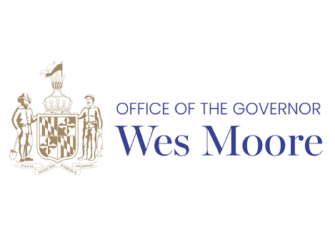
Every Year You Should Review Backups, Audit Software, Clean Up Passwords, and Clean Your Inbox
1. Preventing severe consequences by backing up your files and testing they can be restored.
Haven’t you started a backup plan? …. You should start your backup plan today! We have found that the 3-2-1 backup plan is the best test for a good backup. The 3-2-1 backup plan means having:
-
at least 3 total copies of your data,
-
2 of which are local but on different mediums or devices (such as an external hard drive or a Time Machine drive), and
-
at least 1 copy offsite.
Using a backup plan is important because the unexpected could happen to your computer. Whether something inside the computer fails or a drink physically spills on your PC, you aren’t going to want to lose what’s inside. Regularly updating your backups by automating them will make sure you always have the most up-to-date versions, so you do not leave a significant amount of recent work unprotected. To get a more in-depth explanation of 3-2-1 view this article: https://www.backblaze.com/blog/the-3-2-1-backup-strategy/
If you are currently backing up your files and following the 3-2-1 backup plan, make sure you review what is being backed up. Adding new data over the past year may have been put in a location not currently being backed up.
Once you have a solid backup, the 3rd step is making sure you have tested the restore process for your backup software. Having a reliable restore process procedure and performing it quarterly or yearly will make sure the backup process is running as intended.
2. Ensure that you have budgeted and are only paying for what you are using by auditing your technology.
To optimize your utilization and efficiency of technology, you should plan your technology budget for the year. Make sure you know all software, licenses, phone, etc. products and services you are utilizing in your business. Auditing your licenses and vendors in advance will help you to make sure you are going to use what you are paying for. Based on specifications, you can then create monthly projections for the year to determine whether it is worth the investment. You may also decide not to renew or on the other hand increase your use based on those specifications.
Some technologies that you will want to audit and budget include:
-
SaaS (“on-demand software”)
Software as a Service is a software licensing and delivery model in which software is licensed on a subscription basis and is centrally hosted. -
G-Suite
By Google, a set of intelligent apps including Gmail, Docs, Drive and Calendar to connect the people in your company, no matter where in the world they are. -
Office 365
A subscribable plan to get you fully installed Office applications: Word, Excel, PowerPoint, OneNote, Outlook, Publisher, and Access. -
Anti-virus and monitoring software
Service that provides proactive monitoring to network servers, printers, network devices, applications, databases and more. -
Recurring charges
It is important to keep an eye on the recurring costs depending on what you purchase. If you choose not to budget for the charges in the following year, you must remember to terminate your subscription.
3. Manage and Clean Your Passwords for the Web
There are so many rules to follow to be sure you are creating robust and unique passwords. In short, some of those rules include:
-
Don’t repeat your password, use separate unique passwords for your online accounts
-
Use strong passwords for all accounts, using a combination of numbers and letters
-
Use numbers, symbols and a mixture of upper and lowercase letters in passwords
-
Do not use the name of your pet, child, significant other, school, mom, or anything that someone could easily guess. Create passwords unrelated to your personal information
-
Do not use simple words, phrases such as “password,” keyboard patterns such as “qwerty,” or sequential patterns such as “abcd1234.”
-
Make security questions unique and do not blindly answer the question with a response that can be figured out quickly
If any of your current passwords do not comply with any of the listed rules, you should go through and clean them by changing them. With all of these rules, remembering passwords can become involved. Using a password manager can help you with that! LastPass is a password manager that safeguards your data. They use secure encryption algorithms along with local-only encryption and two-factor authentication to vault your passwords.
Starting off the new year with a password manager will help you better manage of all the passwords you are using and reduce using the same password on multiple sites. LastPass can import your current passwords from multiple sources and help you clean things up. This is an example of the LastPass security challenge:
4. Manage Your Passwords and Clean Your Inbox
Getting to Inbox Zero is something every productive person strives to reach. The clean feeling of having no unread emails is great. Fortunately cleaning out your inbox is now simpler than ever. With Unroll.me, you can instantly see a list of all your subscription emails. You are then able to unsubscribe easily from whatever you don’t want. It is a safe way to unsubscribe with one click, without having to go through emails and clicking an “unsubscribe” link manually. By removing unwanted subscriptions, you will clean up your inbox and help your continue to reach Inbox Zero.
(BONUS TIP) 5. Clean Your Server and Network Drives
Just like cleaning up your inbox, cleaning your file storage areas like the public network drive or your server files is important for staying productive. The same goes for cloud document storage like google drive, one note or dropbox. Keep your documents cleaned up of clutter will go a long way to making sure you and your office stay streamlined this year.
Jeremy Heslop, Technology Network Chair, (jeremy@omnitechpro.com) 410-219-2695
Article sponsored by the Technology Network, which meets every month on the 2nd Tuesday at 9am.



